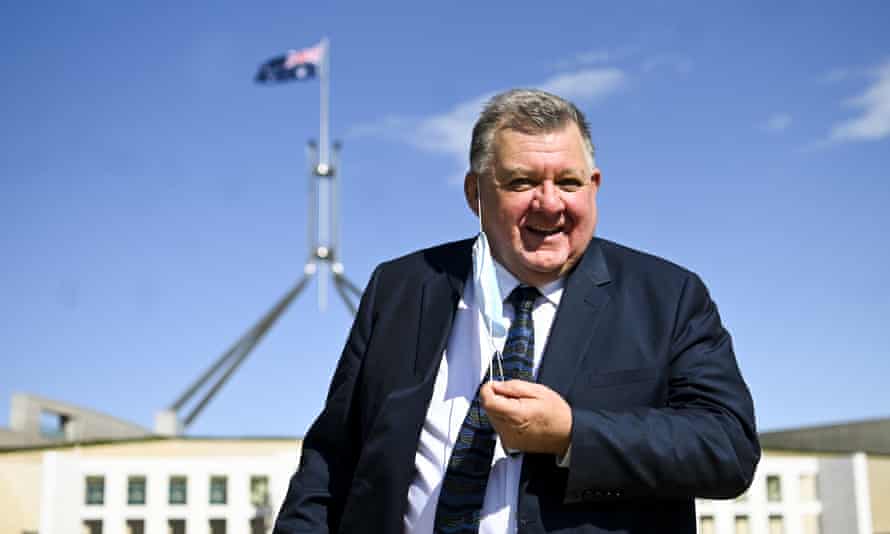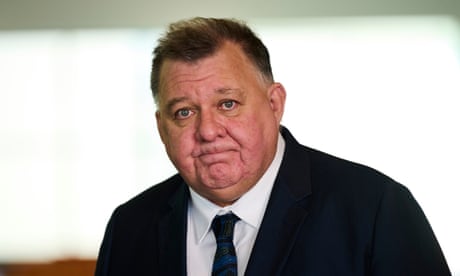Extract from The Guardian
Recent history suggests Liberals and Nationals have little to fear from Craig Kelly and One Nation, but the dynamics of the next vote are unclear.

An anti-lockdown ad by Craig Kelly gave one Queensland MP a shock.
First published on Sat 25 Sep 2021 06.00 AEST
One of the federal government’s Queensland MPs was enjoying some downtime at home recently, watching the reality show SAS Australia. They were interrupted by a sudden jolt – not an abseiling mishap or some other epic fail by a hapless contestant – but the sudden appearance during an ad break of their former colleague Craig Kelly.
You may remember him as the Liberal backbencher with brimming feelings and wild theories on pretty much everything. Kelly parted ways with the government back in February. These days, he’s the federal leader of the United Australia party, fronting ads for Clive Palmer’s political operation.
Given their startled state, my informant couldn’t remember precisely what the ad said. But the message was against lockdowns.
As agitprop goes, this is all pretty nimble. The UAP evidently moves quickly enough to loop an ugly conflagration on the streets of Melbourne back into political messaging, lickety-split. The party’s advertising operation also responded to events rapidly during the last federal election campaign.
A number of Coalition MPs expect that Scott Morrison will call the election after the Christmas break, yet the UAP evidently has the resources to engage in prime time advertising now.
It’s not just television. The UAP’s rubber bullets sponsored post started running on Facebook on Thursday, with a spend to date of between $3,000 to $3,500. This campaign is a recruitment drive: like our videos, like our page, and join the party “today”. Professionals who monitor the digital spend by political parties and candidates tell me the UAP spent around half a million dollars on platforms like YouTube between 27 August and 22 September.
This pre-emptive cash splash should not surprise. According to an analysis of Palmer’s media buy that Labor commissioned after the last federal election, the mining magnate outspent McDonald’s, Toyota and Coles spruiking the UAP in the year leading up to the federal election. He then spent more than $8m on saturation advertising in the final week of the contest.
Kelly contends spruiking on an industrial scale is entirely reasonable because the UAP is seeking to be on a “level playing field” with other established political parties that can draw on taxpayer-funded resources to field their campaigns – professional staff, phones, printing allowances and the like. “There’s another round of community grants coming up, which is another way for members of parliament to get money out the door,” Kelly says. “All that is taxpayer money.”
The UAP are not the only insurgents limbering up for the main event. While there has been some speculation that Pauline Hanson may be considering her future, One Nation looks like it’s had a dose of the smelling salts now that a noisy minority backlash against pandemic public health restrictions and the mandating of vaccines in some sectors seems to be gathering pace. In Queensland, the former premier Campbell Newman is also running for the Liberal Democrats in the Senate.
These protagonists are orienteering along pandemic fault lines. The opening year of Covid-19 brought Australians closer together, and numerous polls registered a rebound in trust in institutions, including governments. But the second year of the crisis has been more rancorous.
Delta, and the protracted lockdowns to try to contain the outbreak while vaccination rates rise, coupled with the Morrison government’s bungling of the rollout, has eroded the sense of Australian exceptionalism that was palpable back when massive fiscal support and effective suppression allowed large swathes of the country to maintain normal-adjacent activity.
Most Australians locked down in the south-east are trudging on stoically without the need for performative resistance, like storming Melbourne’s Shrine of Remembrance. But with the pandemic shifting from a bonding experience to an endurance race, and with a small conga line of political actors marshalling to exploit disaffection by framing public health measures as an egregious violation of liberty, the Coalition is obviously worried about its restive right flank.
This fear explains all the validating of the protesters that happened this week – at least before the mob started using the shrine as an ad-hoc port-a-loo. Before that, there was lots of opportunistic “our brave boys”, “sons of freedom”, “stick it to the man” (as long as the man is Daniel Andrews) going on.
There’s an obvious question to ask. Are Liberals and Nationals worried about the competition on their right flank for good reason?
Recent history would say no.
During the 2019 election, all the noise on the right was ultimately beneficial to Morrison. The surround-sound UAP messaging amplified the risks of a Shorten Labor government, with its nonexistent “death tax”. In Queensland, disaffected Labor supporters parked their protest votes with One Nation and the preferences flowed back to the Coalition overwhelmingly.
But it’s not clear yet whether the same dynamic will apply in the coming federal contest. Thus far, the UAP messaging is very much a pox on all your houses. One of Kelly’s YouTube “stop the lockdown” ads has the former Liberal declaring “we can never trust Liberal or Labor again”.
But who knows how this wave ultimately breaks.

Even if it breaks badly for Morrison, I suspect the noise doesn’t assist Labor. To win the next federal election, the opposition has to be able to mount a “change” case that is simple enough and loud enough for voters to hear.
Anthony Albanese has to be able to convince voters tired of Morrison’s missteps that their protest votes should come to Labor, not alternatives. Success requires reaching disengaged cohorts of voters that are increasingly hard to reach. If the cacophony on the right generates an impenetrable wall of sound, that’s not helpful.
One of the sharpest political operatives I know thinks the coming contest will be a seat-by-seat slugfest rather than an election with a clear national focal point.
This person believes there is actually fertile ground for a grand narrative election because obscured behind the often superficial daily contention of pandemic politics is a lived reality where societal and economic inequality has been supercharged by the public health crisis. The daily contention has also left a lot of Australians wondering whether their federation still works. People want to know what comes next, and voters are craving empathic leadership.
So there’s a certainly contest there to be had.
The question is, will psychologically fatigued voters have the bandwidth to process it?
No comments:
Post a Comment